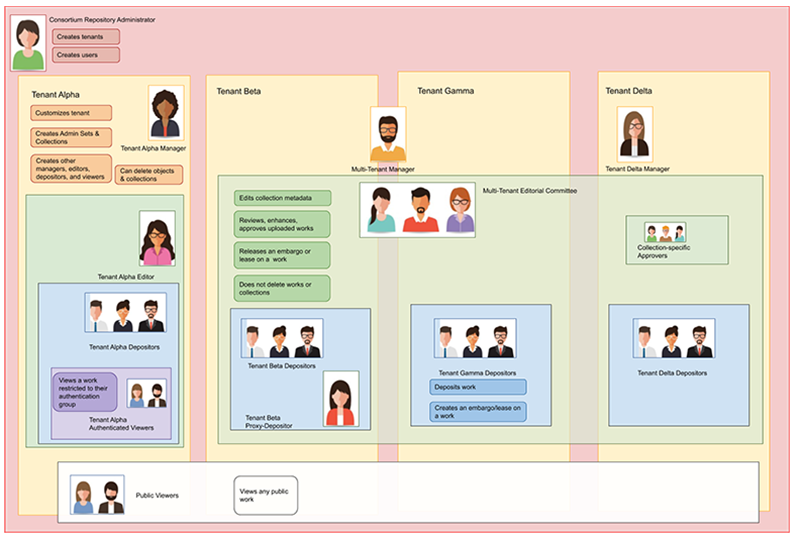An Inside Look at Collaborative Workflows

It’s no surprise that recent global events related to the COVID-19 pandemic have affected libraries across the globe. As we focus on keeping distance to slow the spread, one bright spot is that we have been remotely collaborating on our cross-consortia repository from the beginning, so it’s offered a welcome sense of continuity in troubled times to continue the project.
Our last posts outline the goals and planned activities of our projects, and in the interim we’ve made excellent progress on defining the requirements and designing the planned outcomes for the first two of our major development activities:
- Building collaborative workflows
- Theming and branding development
With this blog post we’d like to focus on introducing what “building collaborative workflows” means to us. Consortial collaboration is more than just sharing costs. We want to create a tool that will allow us to jointly manage a multi-tenant repository infrastructure. Creating the flexibility for both IR workflows and more “traditional” library-owned content within the same instance of Hyku means enhancing the ability to manage user and tenant settings (enabling different workflows) through the consortial dashboard.
Our process for uncovering a way to address the rather broad task we’d given ourselves leaned into our collaborative process to uncover the places where workflows overlapped and diverged among our consortium members. We asked our Product Management Team to articulate the types of collections they hoped to build with Hyku. They described the types and sources of materials, as well as the people involved, thus identifying where workflows overlapped and diverged among our consortium members.
From these we next began to brainstorm through narrative scenarios of various workflows. These helped to highlight specific shared workflow tasks as well as gaps in the current Hyku product. We also examined the existing user roles and permissions available within and across tenants and articulated the need for some additional levels of permission through narrative documents, matrices, and visualizations of these shared workflows.
By working through this process we realized that a robust dashboard for user/role assignment, and the expansion of a few more roles, would enable us to manage these flexible workflow options. The current multi-tenant administrative dashboard for Hyku only allows for the creation of new tenants and the creation of users. We would need something far more powerful to assign users to our envisioned permission levels in multiple tenants.
With this basic idea and our specific needs for user levels articulated, we turned to work with our development partners at Notch8. Talking through each of our requirements documents, we have come up with a rough development plan. Some of our expectations will likely be adjusted based on the feasibility and difficulty of implementation, but our goal of “building collaborative workflows” will remain the same.
- First is to decouple the “role” functionality in Hyku from the “group” functionality. Currently, permissions are assigned at both levels which can work at cross-purposes.
- Next we will develop the dashboard needed to control these permissions. This part will require us to put our creative thinking caps back on to more fully define what this looks like.
- Finally, we will work on implementing roles at the tenant level through the new dashboard.
We hope you’ve enjoyed this little peak behind the curtain at this behind-the-scenes “collaborative workflow” of our own: a cross-consortial development process between partners in three different states and two different time zones, using shared online tools, working asynchronously but together. We look forward to sharing our results in the future.
.png?width=2048&height=794&name=hyku_for_consortia_logo_C-1-2048x794%20(1).png)
